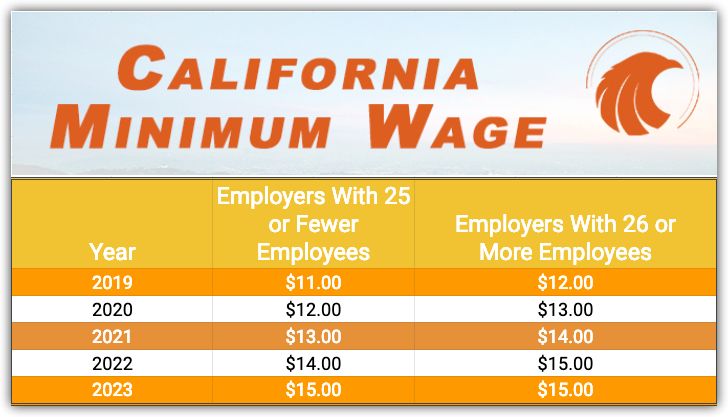Physical Address
304 North Cardinal St.
Dorchester Center, MA 02124
Physical Address
304 North Cardinal St.
Dorchester Center, MA 02124

Contents [hide]
As of January 1, 2024, the minimum wage in California stands at $16.00 per hour for all employers. However, certain industries such as fast food restaurants and healthcare facilities have specific minimum wage rates that are higher than the state’s standard. Fast food restaurant employees will see their minimum wage increase to $20.00 per hour effective April 1, 2024, while healthcare workers will earn a minimum of $18, $21, or $23 per hour starting June 1, 2024, depending on the type of facility they work in and their location.
The new industry-specific minimum wage laws are expected to benefit around 900,000 Californians, with potential ripple effects on other sectors. The adjustments come at a time when the labor market is highly competitive, with businesses, especially small enterprises, facing challenges in recruiting and retaining employees. The move to increase minimum wages for fast-food workers could lead to similar adjustments in wages across the restaurant and food industry, as employers strive to remain competitive and address issues of understaffing and burnout among workers.
While the focus has been on specific industries, such as fast food and healthcare, the broader implications of these wage increases are being closely monitored. For instance, the rise in minimum wages could set a precedent for other sectors to push for higher pay rates. Small business owners, like franchisees in the fast-food industry, are concerned about the financial implications of the wage hikes and how it might impact their operations.
Looking ahead, California voters will have the opportunity to decide on a ballot initiative that proposes raising the state minimum wage to $18 an hour. The ongoing discussions around minimum wages extend beyond specific industries, with workers in various sectors advocating for better pay. For instance, a proposed ordinance in Los Angeles aims to establish a $25 minimum wage for tourism industry workers before major events like the 2026 World Cup and the 2028 Olympics.
Economists and policymakers are weighing the costs and benefits of higher minimum wages. While some express concerns about potential price increases for consumers and the impact on businesses, others highlight the positive outcomes, such as improved standards of living for low-wage workers. The debate around minimum wages also intersects with broader labor issues, including worker classification, the impact of technology on jobs, and housing affordability.
Labor unions and worker advocates are celebrating the recent victories in securing higher minimum wages for specific industries. However, their agenda extends beyond wage increases to address a range of issues affecting workers, such as stable work schedules, worker classification, and the impact of emerging technologies on employment. The focus is not just on raising wages but also on creating a more equitable and supportive work environment for all workers.
As California continues to navigate labor challenges and economic changes, the role of advocacy groups, policymakers, and businesses in shaping the future of work remains crucial. By addressing wage disparities, improving working conditions, and advocating for workers’ rights, stakeholders aim to create a more inclusive and sustainable labor landscape in the state.